MINI Rocketman Concept: "
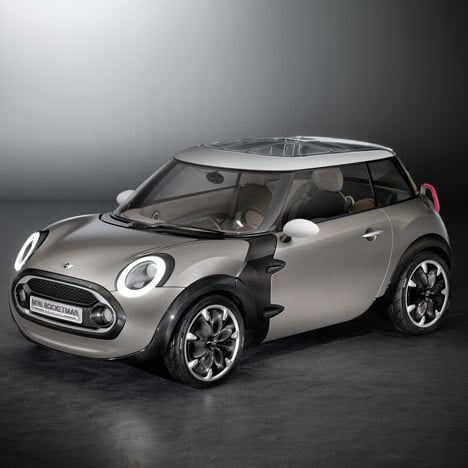
Car brand MINI present the Rocketman concept car at the International Geneva Motor Show, which opened yesterday.
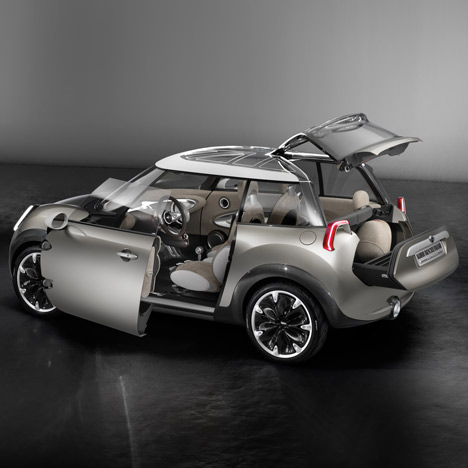
The design features wide-opening doors with double-hinge joints, allowing easier entry into the rear passenger seat of the three-door car.
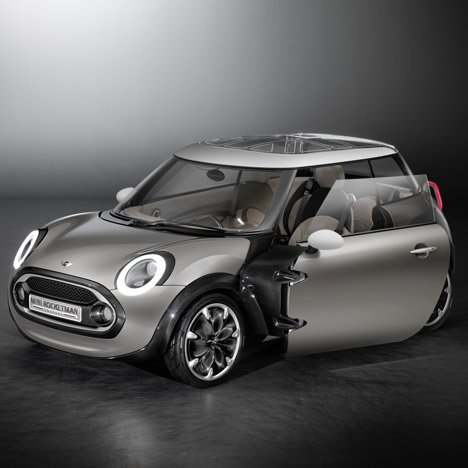
The luggage compartment can be adapted by pulling out a drawer at the back of the car to store larger items.
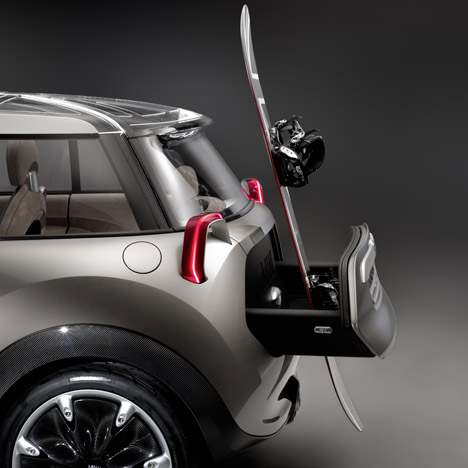
Integrated fibre-optics illuminate the interior and glass roof, which is imprinted with the Union Jack.
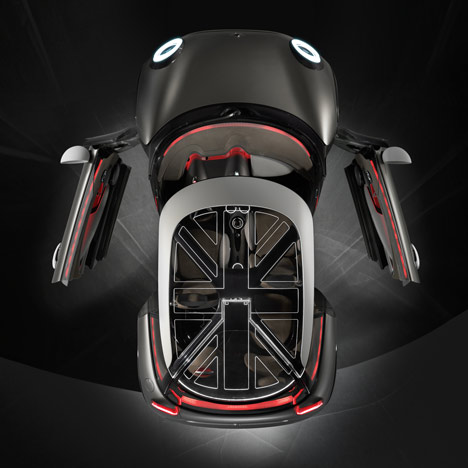
The International Geneva Motor Show continues until 13 March.
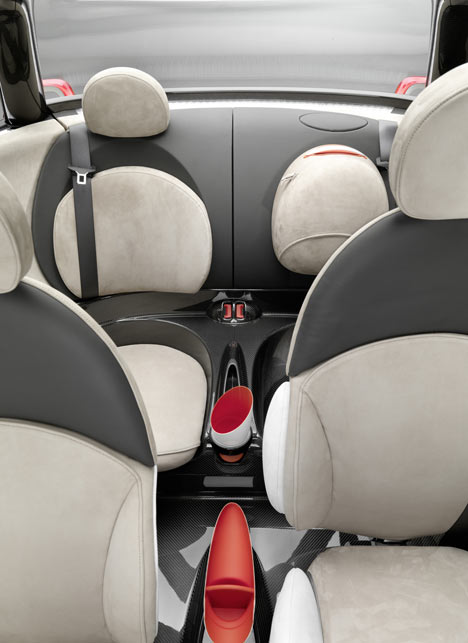
More vehicles on Dezeen »
Here’s some more information from MINI:
Driving fun in a new dimension: The MINI Rocketman Concept.
The creation of innovative concepts for urban mobility has seen MINI grow into the successful brand we know today. A constant stream of new ideas from its beginnings more than 50 years ago to the present day have ensured that driving fun has continued to grow even though space on our roads has become ever tighter.
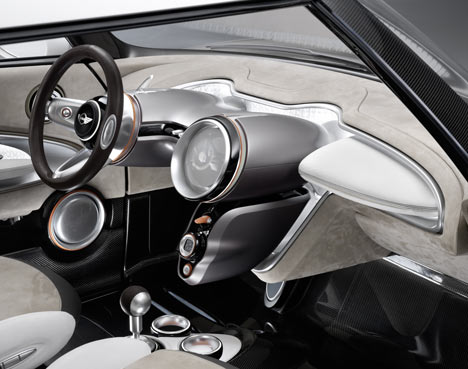
Underpinning this success has been the creative use of space, a principle that enters new territory with the MINI Rocketman Concept. The study car, which will be revealed to the public worldwide for the first time at the International Geneva Motor Show (3 – 13 March 2011), harks back to the classic Mini in terms of its exterior dimensions, while its technology points to thefuture of automotive design.
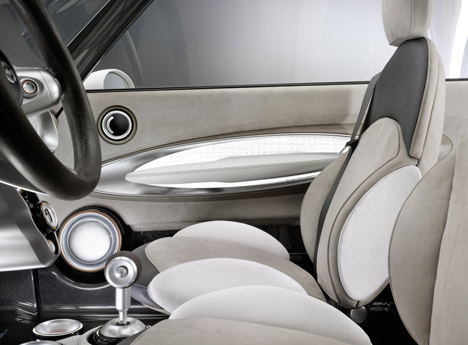
A 3+1-seater with 3 doors and a length of just over 3 metres (approx. 10 ft.), the MINI Rocketman Concept responds to the fundamental requirements of mobile lifestyles in the big cities of the future by pooling the brand’s core values in concentrated form. Ingenious functionality, smile-inducing agility, exceptional efficiency and irresistible design come together into an extraordinarily attractive and groundbreaking, yet typically MINI, subcompact car concept for the premium segment.
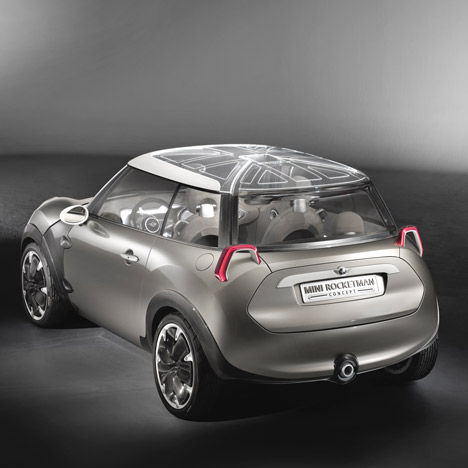
Displaying both an awareness of tradition and talent for innovation, the MINI design team developed the vision of a car that takes up impressively little space on the road but boasts an enviably spacious interior. The MINI Rocketman Concept therefore carries over the classic virtues of the brand into a pathbreaking vehicle concept. It offers a fresh interpretation of unmistakable MINI design features, and uses cutting-edge construction and manufacturing technology to create unique solutions in body and interior design.
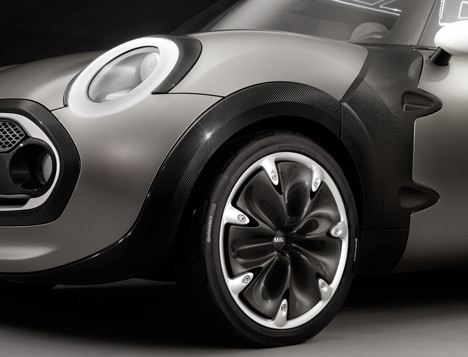
The innovative character of the study is defined by the systematic application of lightweight design principles and a pure-bred interior geared to maximum driving fun and unbeatable variability. A carbon spaceframe construction, whose striking surface structure is visible at the front end of the car, around its doors and in the interior, forms the basis for a weight-minimising construction. Indeed, the MINI Rocketman Concept offers the ideal platform for achieving outstanding efficiency.
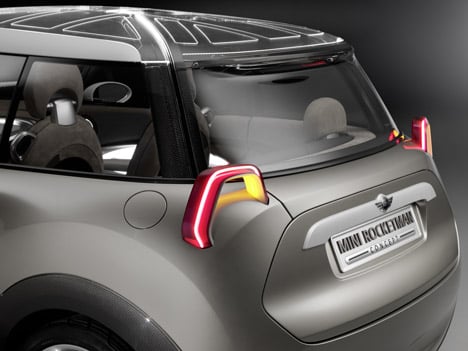
To this end, it is designed to allow the integration of a MINI drive system which combines further enhanced sprinting ability with average fuel consumption of just three litres per 100 kilometres (94 mpg imp). Wide-opening doors with double-hinge joints and integrated sills facilitate entry into the MINI Rocketman Concept. The lightweight seats are contoured in customary MINI style and can be arranged in a variety of different positions.
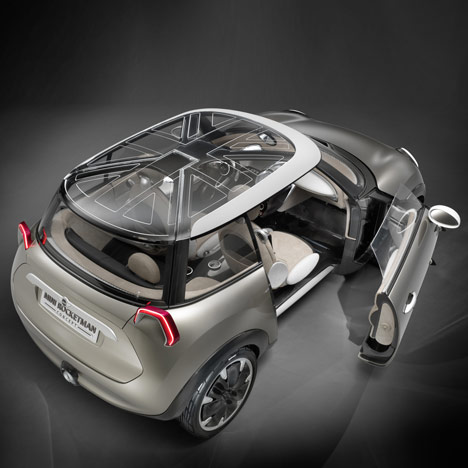
This allows owners to choose between maximum driving fun two-up, a comfortable amount of room for three occupants, or even an exceptionally efficient division of space accommodating four seats. The capacity of the luggage compartment can be adapted to passenger requirements just as flexibly.
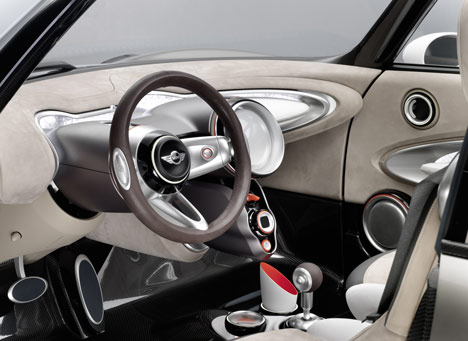
The two-part tailgate consists of one section which is attached to the roof and opens extremely high, and a lower section which extends out of the body in the form of a drawer. The operating logic of the MINI Rocketman Concept is also geared to the multi-layered demands of a contemporary target group, whose mobility needs are shaped by their desire for driving fun, flexible usage possibilities and extensive connectivity with their lives outside the car.
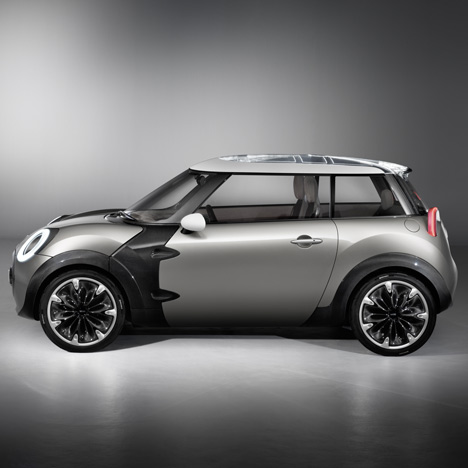
The MINI Rocketman Concept body is shaped by an avant-garde interpretation of time-honoured brand features. Innovative construction techniques allow the principle used in the classic Mini of providing the maximum amount of room on the smallest possible footprint to be carried over to the mobility challenges of urban areas in the 21st century. The MINI Rocketman Concept measures 3.419 metres (approx. 11 ft. 3 in.) in length, adding just a few extra centimetres to the front and rear of the brand’s founding father born in 1959.
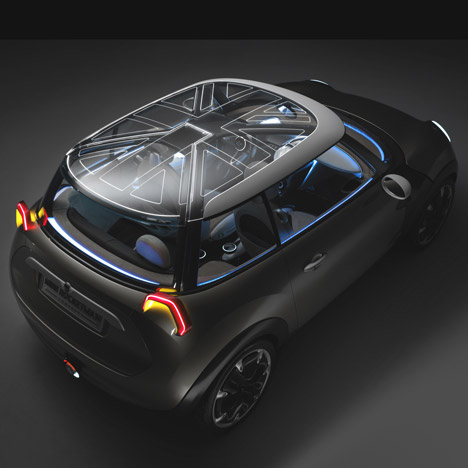
The new study is 1.907 metres (approx. 6 ft. 3 in.) wide, including the exterior mirrors, and stands 1.398 metres (approx. 4 ft. 7 in) tall. Its proportions also display clear symmetries with both the classic Mini and the brand’s present day line-up. The brand’s familiar appearance is therefore concentrated into a new set of dimensions, with the concept for a new vehicle segment remaining unmistakably recognisable as a MINI.
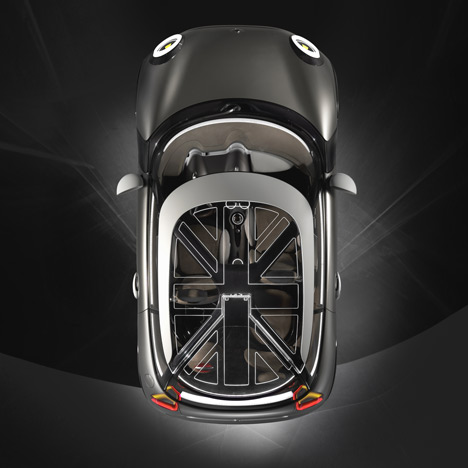
Large, circular headlights and a radiator grille with chrome surround dominate the front end. While the exterior contours of the headlights fit the familiar visual template, their inner structure has been further developed for the new study. The centrally positioned LED units generating full beam are bordered by an eye-catching light ring for dipped-beam mode. Direction indicators integrated into the headlight units are a feature shared with the current range of series-produced MINI models.
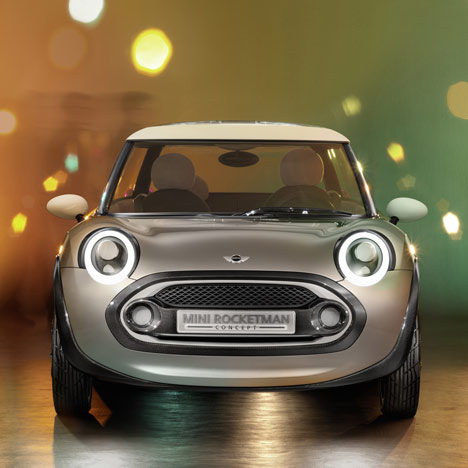
The dimensions of the headlights reflect those of the current MINI, which means they come across as particularly large when set against the smaller face of the study car. As stand-out features of MINI design they symbolise the core values of the brand, which remain reassuringly intact in the new vehicle concept represented by the study.
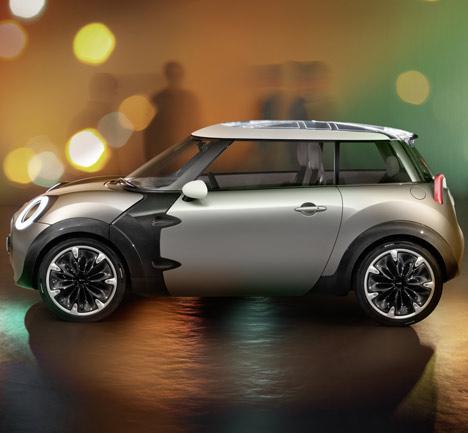
While the study showcases a new format, MINI still remains true to its bloodline. More than 50 years ago the brand’s first car triggered a revolution in the small car segment. The classic Mini met the needs of urban mobility more comprehensively than any other vehicle before it, while at the same time offering the driving fun and individual style that sealed its legendary status.
Today MINI continues to fulfil in its own unique way the desires of demanding target groups with a sense for the creative use of space, inspiring handling and premium quality. The MINI Rocketman Concept offers a glimpse of how these features may look in the future. Using innovative technology and creative solutions, the study reflects the brand’s unsurpassed expertise in the development of vehicle concepts producing maximum interior versatility within minimal exterior dimensions and all while delivering unbeatable driving fun.
via dezeen



















